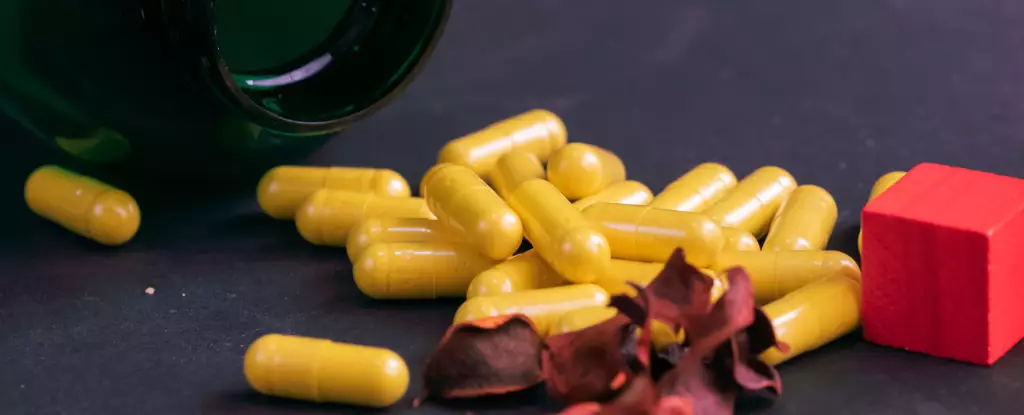In recent years, GLP-1 receptor agonists such as Ozempic and Mounjaro have emerged as groundbreaking drugs that offer significant benefits for individuals grappling with type 2 diabetes and obesity. Designed to mimic the action of the glucagon-like peptide-1 hormone, these medications have spurred immense demand worldwide. Patients require effective treatments for chronic health conditions, while others seek weight loss solutions. Amidst this surge of interest, however, a wave of dietary supplements claiming to emulate the effects of GLP-1 has inundated the market. This begs the question: Can these supplements truly provide the same benefits as their pharmaceutical counterparts, or are they merely marketing gimmicks?
GLP-1 receptor agonists like Ozempic and Wegovy operate by imitating the natural GLP-1 hormone, which is secreted by our intestines and plays a crucial role in the digestion process. This incretin hormone is responsible for modulating how our bodies process food, particularly regulating appetite and stimulating insulin release. Unlike the body’s naturally occurring GLP-1, which has a fleeting lifespan measured in minutes post-release, these synthetic versions linger in the bloodstream for up to a week. This prolonged action not only helps users achieve greater satiety but also stabilizes blood sugar levels, facilitating effective weight management and diabetes control.
Interestingly, GLP-1 medications were initially synthesized as therapeutic agents for diabetes but have recently been approved for broader use in weight management. Their ability to slow gastric emptying and reduce appetite signals to the brain has made them a game-changer. However, as their popularity soars, a host of so-called “GLP-1 supplements” is entering the marketplace, promising similar effects. But how do these supplements stack up against established medications?
Despite their growing presence, GLP-1 supplements are often misleadingly marketed. These products typically contain various plant extracts and nutrients purported to mimic the role of GLP-1 in regulating digestion and appetite. For instance, psyllium husk, a common ingredient derived from the psyllium plant, has been touted for its fiber content and potential to assist with constipation. Yet, regulated research remains sparse regarding its effectiveness in weight management, leading to its exclusion from health claims in Europe and the UK.
Similarly, green tea extract has long been championed as an effective weight-loss supplement. However, scientific scrutiny often reveals a lack of consistent results, with many studies potentially influenced by methodological flaws. Furthermore, the potential for liver toxicity raises significant safety concerns. These examples underscore the critical need for caution when evaluating the efficacy and safety of such supplements.
Some proponents advocate for berberine, a herbal extract linked to traditional Ayurvedic practices, as a natural alternative to GLP-1 drugs. While certain studies indicate a capacity to provoke GLP-1 secretion, translating laboratory results to human health outcomes proves tenuous and unreliable. Unfortunately, the transient nature of any benefits gained from berberine also limits its utility.
Taurine, an amino acid prevalent in meat and shellfish, has also garnered interest due to its potential association with GLP-1 activity. Research shows some promise in animals, but human studies remain limited and inconclusive at best. This ongoing ambiguity illustrates that while some supplements may influence GLP-1 levels slightly, they fail to deliver the comprehensive effects achieved through GLP-1 receptor agonist medications.
A recurring theme among GLP-1 mimicking supplements is their potential side effects, many of which can be significant. These range from gastrointestinal disturbances to more severe complications, depending on the supplement’s components. For instance, the laxative effect of psyllium and the hepatotoxicity of green tea extracts reveal the risks involved in subpar weight-loss solutions.
Ultimately, these “quick-fix” supplements fall short of their promises and serve as potentially dangerous alternatives to scientifically validated treatments. It is crucial to approach these products with skepticism and to prioritize safety and efficacy through established methods of weight management and disease prevention.
While GLP-1 drugs represent a significant advancement in treating obesity and type 2 diabetes, it’s vital to recognize their limitations and the potential pitfalls of unregulated supplements. For those striving to improve their health, adopting a holistic approach that includes a balanced diet and regular physical activity remains the most sustainable solution. This lifestyle not only enhances natural GLP-1 production but also leads to comprehensive wellness improvements—an endeavor that synthetic products simply cannot replicate.
While the allure of GLP-1 drugs and their supplement counterparts is undeniable, a thorough understanding of their fundamental differences emphasizes the importance of relying on proven medical solutions. Balancing education with proactive health measures will foster a more effective path toward wellness.


Leave a Reply